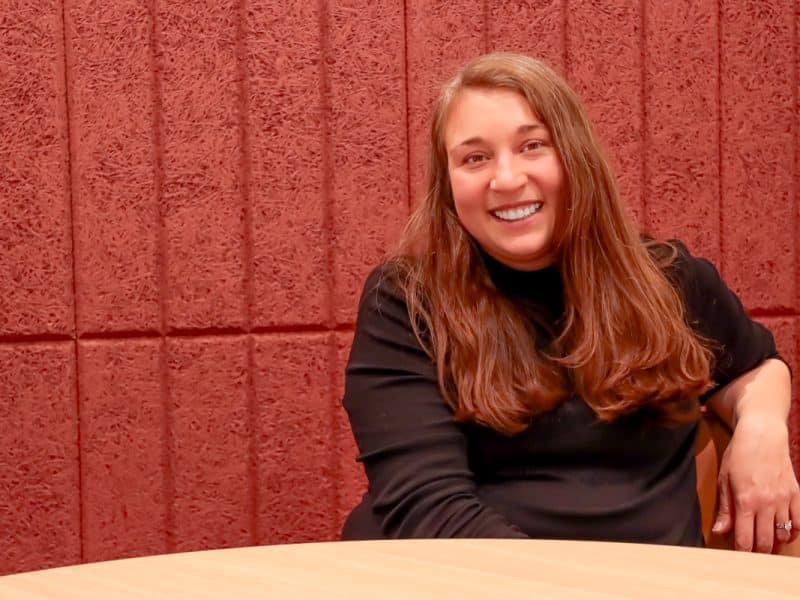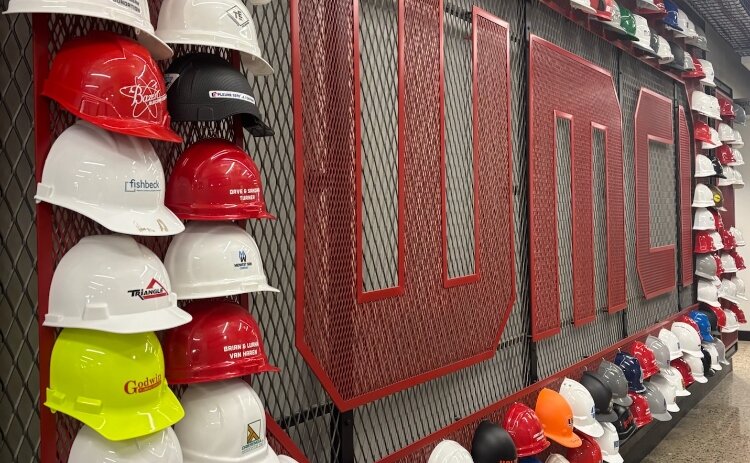Equity, inclusion and hope on the West Side of Grand Rapids
It’s been called the gold rush of Grand Rapids’ West Side. Recent projects in the area include an expansion of Harmony Brewing Company, a mixed-use development called Fulton Place, and Lofts on Alabama from the 616 Development, LLC. It’s a gold rush, however, that makes residents feel on edge.

It’s been called the gold rush of Grand Rapids’ West Side. Recent projects in the area include an expansion of Harmony Brewing Company, a mixed-use development called Fulton Place, and Lofts on Alabama from the 616 Development, LLC. It’s a gold rush, however, that makes residents feel on edge.
“That’s why we are here,” says Sergio Cira-Reyes, project director at Westown Collaborative. “We want the residents of the West Side to feel that all this development isn’t something that is happening to them, but that they are a part of it.”
Westown Collaborative, Cira-Reyes explains, is a collaborative of organizations that support the residents and causes of the Westown community. The collaborative was founded in 2011 to bring equity, inclusion and hope to the West Side.
Facilitated with the help of Asset Based Community Development (ABCD) consultant Wayne Squires, funding for the collaborative was sought from the W.K. Kellogg Foundation, Grand Rapids Community Foundation, and several other organizations. Partners now include Other Way Ministries, Westown Jubilee Housing, Habitat for Humanity Kent County, Servants Community Church, the Grand Rapids Public Library, Gold Avenue Church, John Ball Area Neighbors, Esperanza Covenant Church, Downtown YMCA, Bridge Street House of Prayer, Keystone Community Church, West Grand Neighborhood Organization, and other groups.
“We want to redefine what it means to be a good neighbor,” Cira-Reyes says. “We welcome new businesses coming in, and we want to connect with them. A part of that is raising their awareness about how their projects affect the community.”
Here’s the challenge, he says. Where there used to be “mom ‘n pop” shops and businesses, large developments have been replacing them. Houses that were once owned by individuals and families—and sometimes rented out by them—are now often owned by people living in other areas, and rental properties are run by property management companies. Their goal is to earn top dollar for the property owner.
Andrew Sisson, Westown Collaborative community connector, joins the conversation.
“Currently the market rate for a studio apartment is about $1,000 a month,” he says. “That’s bringing in wealthier residents, and that means people living here are being forced out. About 40 percent of those living in these neighborhoods have incomes below the poverty level. People with children are having a hard time renting, because kids are hard on a house and the new owners don’t want to rent to them. And those who lost their houses in 2008 to foreclosure — the majority of those were sold to investors with cash, buying up single family housing and turning them into rental homes.”
Minorities and immigrant populations are particularly hard-hit, Cira-Reyes and Sisson state, while those with felonies in their histories are unable to find a place to live, let alone a living.
“Someone with a felony may have to show an income three times that of anyone else renting the same apartment,” Sisson says.
But that’s why Westown Collaborative collaborates — to even the playing field.
Sisson continues: “Habitat for Humanity is one of our partners, as is Westown Jubilee Housing. They both provide affordable homeownership and renting options on the smaller scale specific to the West Side. Also, Genesis Non-Profit Housing has purchased the former St. James School building to put in lower-income senior housing, and a similar plan is in the works for the former Lexington School building for affordable senior housing, although both are on hold for funding purposes.”
Building on the premise that every West Side resident (according to a City of Grand Rapids 2015 study, the West Side has a population of 22,297) has something to offer, a unique set of skills and talents, Westown Collaborative works to elevate every resident’s voice in the future of their community. Five objectives promise to get them there.
“We start with neighborhood listening,” Sisson says. “Door to door, we ask people what changes they want to see in their community, what would get them engaged.”
“Residents can, and should, be part of what makes the community thrive,” Cira-Reyes adds. “Then we look for the strengths and try to connect them to each other. We find out what the passions of residents are and build a community from that. Non-profits often try to come in and fix a community from the outside, but that’s not sustainable. This is building infrastructure.”
Westown Collaborative looks for community leaders and provides support when they hit roadblocks. Neighborhood advocacy is another objective.
“That’s when equity, inclusion and hope come together,” Sisson says.
With schools at the center of any healthy community, increasing third-grade literacy in public schools, especially among African-American and Hispanic students, is another objective.
“As a collaborative, we don’t do the programming,” says Sisson. “But if a partner has a good program in place, we make the connections.”
“Literacy is key to rising up,” Cira-Reyes agrees. “Another of our objectives is to support the Challenge Scholars at Harrison and Westwood schools to make sure they graduate from Union High School and are ready for college. We work with the families and connect them with the services and resources they need to succeed. These are often first-generation college students, so we help parents build confidence, make sure they know next steps.”
Because 92 percent of Challenge Scholars come from economically disadvantaged families, the resources and services to which the collaborative connects the students and their families may address issues such as food insecurity, health issues, housing, and neighborhood safety.
“And that’s one of our objectives, too,” says Sisson. “To increase our collaborative capacity by sharing resources, people, programming. Most often people come to us because they need help finding jobs. That’s what we hear about the most when we do our door-to-door listening. We help with referrals and keep a list of felony-friendly employers. When a new business opens, we talk to them about hiring from within the community.”
“Everyone is important to this community,” Cira-Reyes says. “That’s what we do, make sure everyone is represented at the table.”
Zinta Aistars is creative director for Z Word, LLC. She also hosts the weekly radio show about books and writers, Between the Lines, at WMUK 102.1 FM.
This story is part of a series of solutions-focused stories and profiles about the programs and people that are positively impacting the lives of Michigan kids. The series is produced by Michigan Nightlight and is made possible with funding from the W.K. Kellogg Foundation. Read other stories in this series here.








